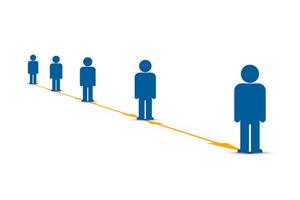Research
Study Looks at Attitudes Toward Social Distancing in COVID-19 Pandemic

Consumed with the news of the global pandemic this spring, SPA Assistant Professor Nathan Favero decided to put his regular research projects on hold. He turned instead to issues related to COVID-19, focusing on the factors that influence an individual’s willingness to social distance.
In early April, Favero partnered with Mogens Jin Pederson at the University of Copenhagen to design an online survey of nearly 1,500 U.S. residents, to examine their adherence to social distancing as a strategy to contain the spread of COVID-19. In less than two months, Wiley Online Library published their findings in “Social Distancing During the COVID‐19 Pandemic: Who Are the Present and Future Non‐compliers?”.
“Along with everyone else, I was feeling helpless stuck at home,” said Favero, who had begun teaching his AU students online in March (from his Washington D.C. apartment), before he decided to study pandemic behavior. “It was a way for me to be acting at a time when it felt like the world was falling apart and do some research that was directly connected to this strange experience,” he said.
The results of the survey indicated broad willingness to engage in social distancing, irrespective of the economic costs at the time. Respondents said they could see themselves isolating for an average of 17 weeks.
Interestingly, demographic characteristics were not great predictors of social distancing. For instance, while men indicated less intention to socially distance, they also signaled that they could see themselves isolating for longer. Older people and Democrats said they anticipated doing more social distancing, but when controlled for other factors those links did not hold.
The main predictors of willingness to social distance were news consumption and interpersonal attitudes. People who read newspapers closely were more apt to social distance than those who got their information from radio and television. Also, respondents with prosocial concerns and empathy were more likely to show motivation to maintain safe distance.
“Those who believe that COVID-19 is a monumental threat to society tend to socially distance more, and those who believe that government should require non-essential businesses to close for a time tend to socially distance much more,” the study maintained. “Those who think we must keep the economy going, even if it means more COVID-19 deaths, report behavior less consistent with social distancing guidelines.”
The findings underscore the need for public messaging, particularly though broadcast media, to gain compliance. That information is best given by local authorities, as research indicates the public is more trusting of local than federal government, noted Favero.
To encourage further examination of the research, Favero has made his data freely available.
